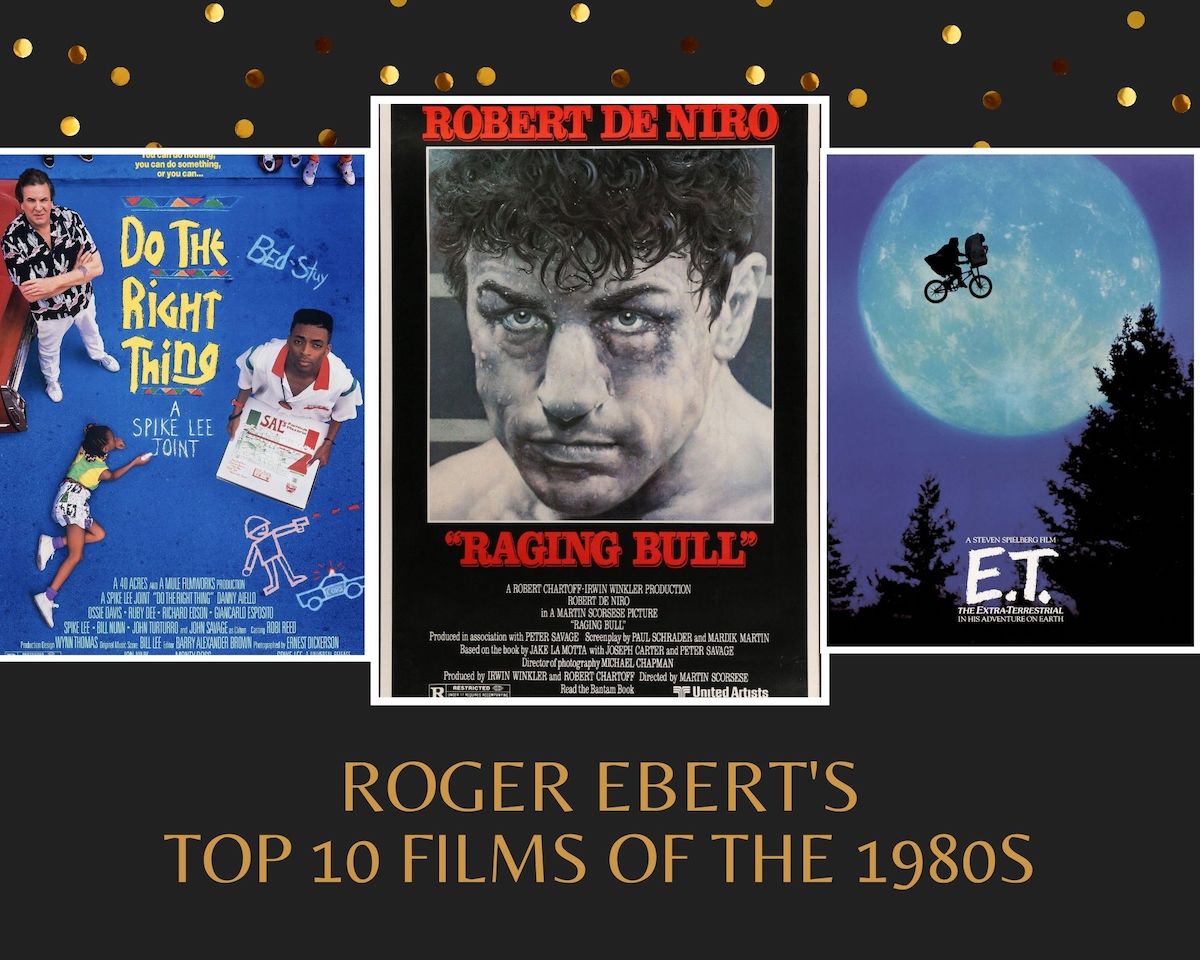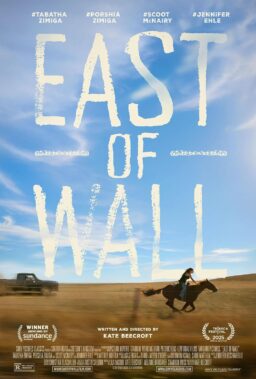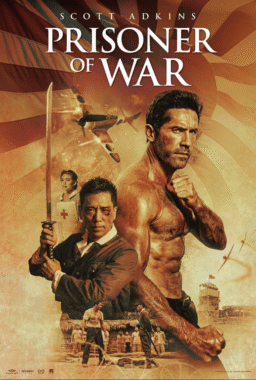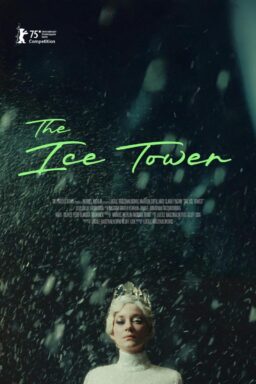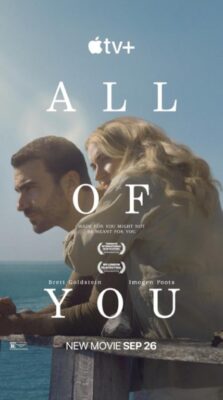DO THE RIGHT THING; E.T. THE EXTRA-TERRESTRIAL; RAIDERS OF THE LOST ARK; HOUSE OF GAMES; RAGING BULL; THE RIGHT STUFF; MY DINNER WITH ANDRE…what do they all have in common? They all made Roger’s invaluable Top Ten films list from particular years or decades. Today we republish Roger’s Top Ten Films of the 1980’s. And it makes me want to sit in a theater and watch them all now.
Click on the title of each film, and you will be directed to the full review…
ROGER EBERT’S TOP TEN FILMS OF THE 1980s

10. HOUSE OF GAMES
There is in all of us a fascination for the inside dope, for the methods of the confidence game, for the secrets of a magic trick. But there is an eternal gulf between the shark and the mark, between the con man and his victim. And there is a code to protect the secrets. There are moments in “House of Games” when Mantegna instructs Crouse in the methods and lore of the con game, but inside every con is another one. I met a woman once who was divorced from a professional magician. She hated this man with a passion. She used to appear with him in a baffling trick where they exchanged places, handcuffed and manacled, in a locked cabinet. I asked her how it was done. The divorce and her feelings meant nothing compared to her loyalty to the magical profession. She looked at me coldly and said, “The trick is told when the trick is sold.” The ultimate question in “House of Games” is, who’s buying?

9. PLATOON
After seeing “Platoon,” I fell to wondering why Stone was able to make such an effective movie without falling into the trap Truffaut spoke about – how he made the movie riveting without making it exhilarating. Here’s how I think he did it. He abandoned the choreography that is standard in almost all war movies. He abandoned any attempt to make it clear where the various forces were in relation to each other, so that we never know where “our” side stands and where “they” are. Instead of battle scenes in which lines are clearly drawn, his combat scenes involve 360 degrees: Any shot might be aimed at friend or enemy, and in the desperate rush of combat, many of his soldiers never have a clear idea of exactly who they are shooting at, or why.

8. MISSISSIPPI BURNING
The South grew, the whole nation grew, more comfortable with the radical idea that all men were created equal and endowed with certain inalienable rights, among them life, liberty and the pursuit of happiness. What “Mississippi Burning” evokes more clearly than anything else is how recently in our past those rights were routinely and legally denied to blacks, particularly in the South. In a time so recent that its cars are still on the road and its newspapers have not started to yellow, large parts of America were a police state in which the crime was to be black. Things are not great for blacks today, but at least official racism is no longer on the law books anywhere. And no other movie I’ve seen captures so forcefully the look, the feel, the very smell, of racism. We can feel how sexy their hatred feels to the racists in this movie, how it replaces other entertainments, how it compensates for their sense of worthlessness. And we can feel something breaking free, the fresh air rushing in, when the back of that racism is broken.

7. RAN
The character contains great paradoxes, but they are not the paradoxes of youth; they spring from long habit. Lear has the arrogance of great power, long held. He has wide knowledge of the world. Yet he is curiously innocent when it comes to his own children; he thinks they can do no wrong, can be trusted to carry out his plans. At the end, when his dreams have been broken, the character has the touching quality of a childlike innocence that can see breath on lips that are forever sealed, and can dream of an existence beyond the cruelties of man. Playing Lear is not a technical exercise. I wonder if a man can do it who has not had great disappointments and long dark nights of the soul. Kurosawa has lived through those bad times. Here is one of the greatest directors of all time, out of fashion in his own country, suffering from depression, nearly blind. He prepared this film for 10 years, drawing hundreds of sketches showing every shot, hardly expecting that the money ever would be found to allow him to make the film.

6. RAIDERS OF THE LOST ARK
“Raiders of the Lost Ark” is an out-of-body experience, a movie of glorious imagination and breakneck speed that grabs you in the first shot, hurtles you through a series of incredible adventures, and deposits you back in reality two hours later — breathless, dizzy, wrung-out, and with a silly grin on your face. This movie celebrates the stories we spent our adolescence searching for in the pulp adventure magazines, in the novels of Edgar Rice Burroughs, in comics — even in the movies. There used to be a magazine named Thrilling Wonder Stories, and every shot in “Raiders of the Lost Ark” looks like one of its covers. It’s the kind of movie where the hero gets out of bed wondering what daring exploits and astonishing, cliff-hanging, death-defying threats he will have to survive in the next ten seconds.

5. MY DINNER WITH ANDRE
The idea is astonishing in its audacity: a film of two friends talking, just simply talking—but with passion, wit, scandal, whimsy, vision, hope, and despair—for 110 minutes. It sounds at first like one of those underground films of the 1960s, in which great length and minimal content somehow interacted in the dope-addled brains of the audience to provide the impression of deep if somehow elusive profundity. “My Dinner with Andre” is not like that. It doesn’t use all of those words as a stunt. They are alive on the screen, breathing, pulsing, reminding us of endless, impassioned conversations we’ve had with those few friends worth talking with for hours and hours. Underneath all the other fascinating things in this film beats the tide of friendship, of two people with a genuine interest in one another.

4. DO THE RIGHT THING
Spike Lee’s “Do the Right Thing” is the most controversial film of the year, and it only opens today. Thousands of people already have seen it at preview screenings, and everywhere I go, people are discussing it. Some of them are bothered by it; they think it will cause trouble. Others feel the message is confused. Some find it too militant, others find it the work of a middle-class director who is trying to play street-smart. All of those reactions, I think, simply are different ways of avoiding the central fact of this film, which is that it comes closer to reflecting the current state of race relations in America than any other movie of our time.

3. E.T. THE EXTRA-TERRESTRIAL
This movie made my heart glad. It is filled with innocence, hope, and good cheer. It is also wickedly funny and exciting as hell. “E.T. The Extra-Terrestrial” is a movie like “The Wizard of Oz,” that you can grow up with and grow old with, and it won’t let you down. It tells a story about friendship and love. Some people are a little baffled when they hear it described: It’s about a relationship between a little boy and a creature from outer space that becomes his best friend. That makes it sound like a cross between “The Thing” and “National Velvet.” It works as science fiction, it’s sometimes as scary as a monster movie, and at the end, when the lights go up, there’s not a dry eye in the house.

2. THE RIGHT STUFF
“The Right Stuff” is likely to be a landmark movie in a lot of careers. It announces Kaufman’s arrival in the ranks of major directors. It contains uniformly interesting performances by a whole list of unknown or little-known actors, including Ed Harris (Glenn), Scott Glenn (Alan Shepard), Fred Ward (Grissom) and Dennis Quaid (Cooper). It confirms the strong and sometimes almost mystical screen presence of playwright Sam Shepard, who plays Yeager. And it joins a short list of recent American movies that might be called experimental epics: movies that have an ambitious reach through time and subject matter, that spend freely for locations or special effects, but that consider each scene as intently as an art film. “The Right Stuff” goes on that list with “The Godfather,” “Nashville,” “Apocalypse Now” and maybe “Patton” and “Close Encounters of the Third Kind.” It’s a great film.

1. RAGING BULL
LaMotta wins and marries her. Then he becomes consumed by the conviction she is cheating on him. Scorsese finds a way to visually suggest his jealousy: From LaMotta’s point of view, Vickie sometimes floats in slow motion toward another man. The technique fixes the moment in our minds; we share LaMotta’s exaggeration of an innocent event. And we share, too, the LaMotta character’s limited and tragic hang-ups. This man we see is not, I think, supposed to be any more subtle than he seems. He does not have additional “qualities” to share with us. He is an engine driven by his own rage. The equation between his prizefighting and his sexuality is inescapable, and we see the trap he’s in: LaMotta is the victim of base needs and instincts that, in his case, are not accompanied by the insights and maturity necessary for him to cope with them. The raging bull. The poor sap.
